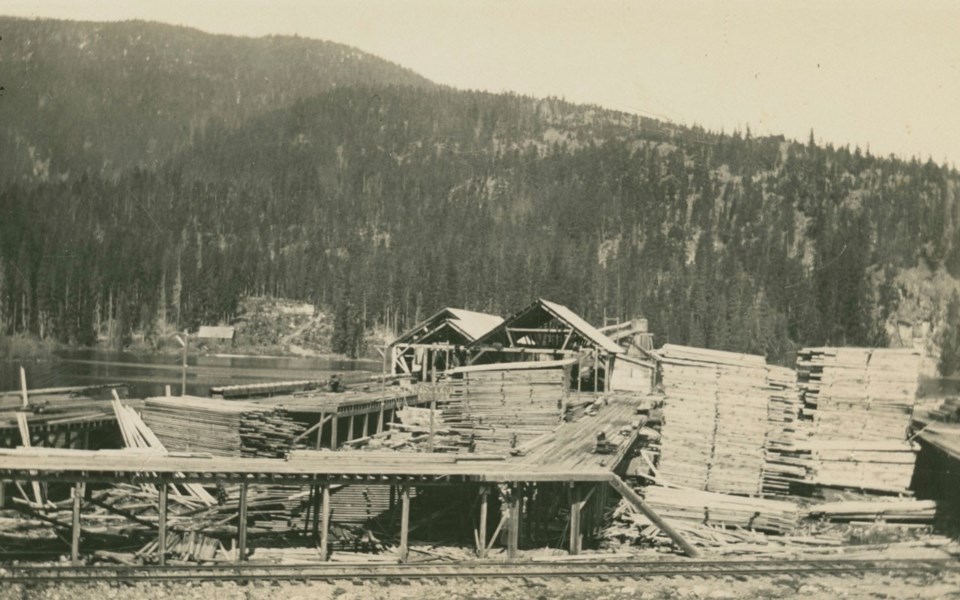Parkhurst may now be known primarily as a ghost town, but it was once the site of the first large and more-permanent mill operations in the valley.
Mr. and Mrs. Parkhurst pre-empted the land on Green Lake in 1902 and built a small house where they lived with their family. It is unclear whether they ever operated a sawmill on the property, which was sold in 1926 after the death of Mr. Parkhurst.
The property was purchased by the Barr brothers of Mission who had been looking for a new source of timber. William, Malcolm and Ross Barr built a mill and a camp for their workers and began operating Parkhurst Mill, named for the previous owners.
In 1928, Malcolm drowned after falling into Green Lake and then, due to the effects of the Depression, the mill went into receivership in 1930. William moved on from the valley while Ross and his wife Alison stayed on at Parkhurst as watchmen hired by the bank until the property could be sold.
In 1932, Parkhurst was sold to B.C. Keeley and Byron Smith who reopened the mill under the name Northern Mills in 1933. Ross Barr and Denis DeBeck were hired by Keeley to manage the mill and worked together until it burnt down in 1938.
The museum recorded two oral histories in 2011 that include many stories and a lot of information about Parkhurst during this time: one with Norm Barr, the son of Ross and Alison Barr, and another with Betsy Henderson, sister of Denis DeBeck.
Betsy Henderson had a very different experience at Parkhurst than those who worked and lived there. She, her mother and two more of her siblings stayed near Parkhurst at what had been the Lineham's mink ranch during the summers of 1936 and '37. Her three older brothers, Denis, Ward and Keary, were all working for Northern Mills and, as Betsy recalled, their mother decided she'd like to stay with all six of her children for the summer.
As she was not working, Betsy was able to explore the area around Parkhurst and got into some rather potentially dangerous situations, such as taking a dip in fast-running Fitzsimmons Creek and crossing the Blackcomb glacier with her brother Keary.
The glacier was full of chasms and on one crossing, Keary asked her to take a picture of him on the upper side of a huge crevasse. Betsy maneuvered around to set up the photo and, as she remembered, "when I looked up to take the picture I found that Keary was sitting just on a shelf of ice." Needless to say, the picture did not get taken.
After the fire, Northern Mills moved to Lost Lake for a year before deciding to rebuild at Parkhurst. Though the mill would continue to operate into the 1950s, neither the Barrs nor the DeBecks went back to the mill. This was not the end of the DeBecks' association with the area, however, as Denis DeBeck continued working in what is today Whistler until 1945, when he followed the Barrs to settle permanently in Squamish.
Over the next few weeks, we hope bring you more stories from the DeBecks, the Barrs and others who worked in forestry in what today is Whistler.




